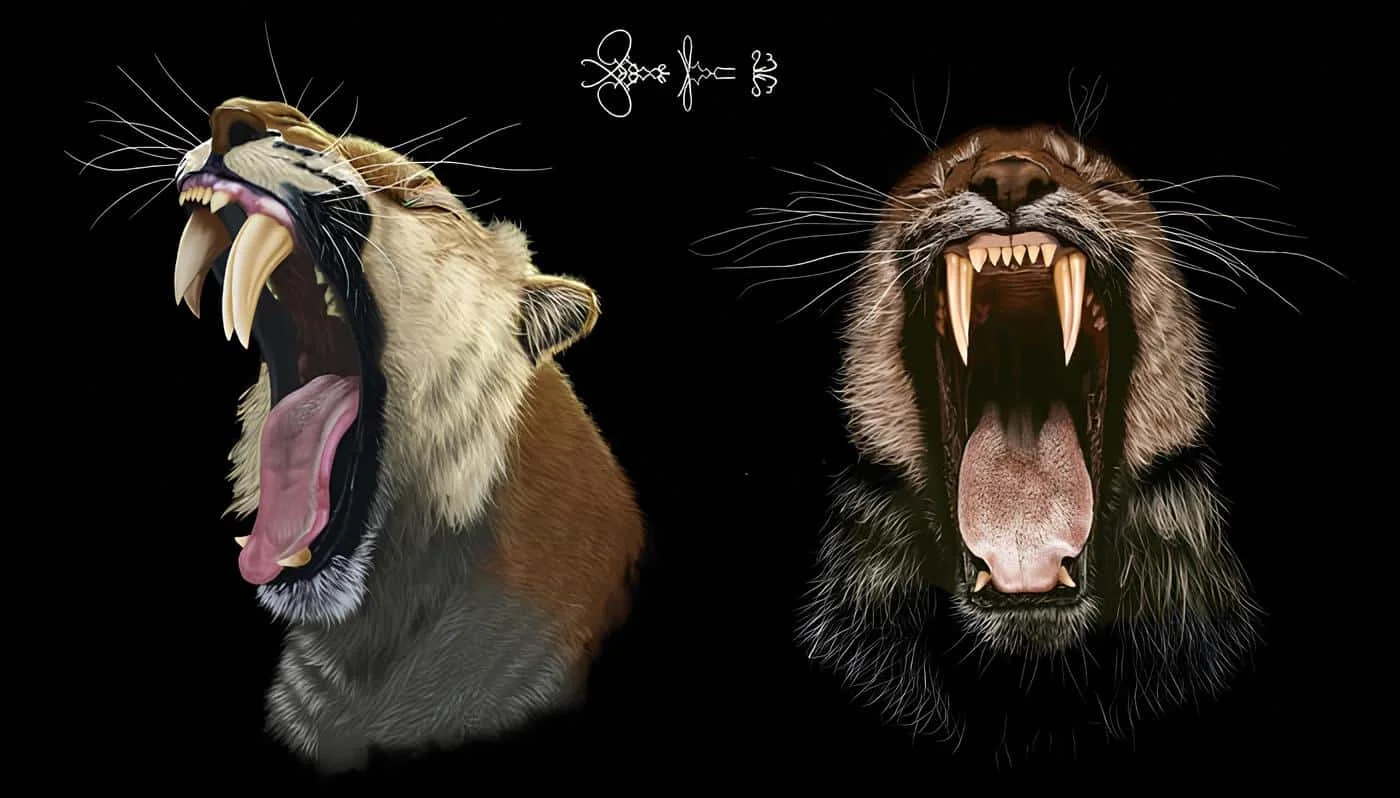A scientist from the United States modeled copies of the teeth of zmylodons on a computer and printed them on a 3D printer and concluded that they could have had double canines (baby and root) at a certain period of their life. Engineering tests showed why animals might need such a dental system.
The La Brea Tar Pits are bitumen deposits in Los Angeles. For thousands of years, animals have fallen into this trap and died here. For this reason, paleontological excavations are carried out here. Over a hundred and a half years, about two thousand saber-toothed cat skulls were excavated from here. An interesting feature was noticed in some of them – the hole of the canine tooth was occupied by not one, but two teeth: one of them was root, the other was milk.
We are talking about the most famous representatives of saber-toothed cats – Smilodon fatalis, which lived on the territory of North and South America from 1.6 million to 10 thousand years ago.
Paleontologist Jack Tseng (Z. Jack Tseng) from the University of California (USA), who studied these skulls, believes that such samples are not a coincidence. He found confirmation of the hypothesis, previously voiced by other scientists, that milk teeth help predators stabilize permanent teeth. The researcher’s findings are presented in the journal The Anatomical Record.
Jack Tseng performed computer simulations and real experiments on plastic models, thereby “testing” the strength of the teeth of the saber-toothed cat Smilodon fatalis when bent sideways. The scientist used a type of engineering analysis called beam bending theory. This model takes into account shear deformation and rotational bending, making it applicable to describe the behavior of building beams, sandwich panels, bridges and other engineering structures.
It turned out that the bending strength of the saber-toothed tiger canine (the force that the tooth can withstand before breaking) remains roughly the same with increasing length, while the hardness of the canine tooth (its deflection under the influence of a certain force) decreases at increasing rates. length. This means that although the strength of the canine decreases slightly during extension, its tendency to bend under load still increases. The scientist also tested 3D-printed replicas of saber-toothed cat teeth for bending and hardness on a special device designed to measure tensile strength. The test results confirmed what the computer simulation showed.
A paleontologist concluded that in adolescent cats, puppy teeth do not fall out for 30 months until a permanent tooth grows in their place. Apparently the milk dog also served as root support. This was probably necessary to avoid losing its main canine tooth before the animal learned to hunt well.
The researcher believes that a similar system may be a feature of Smilodon fatalis only during puberty. Saber-toothed animals may also have developed in other species, but no other examples of double canine teeth in similar species have yet been found in the fossil record.
Source: Port Altele
